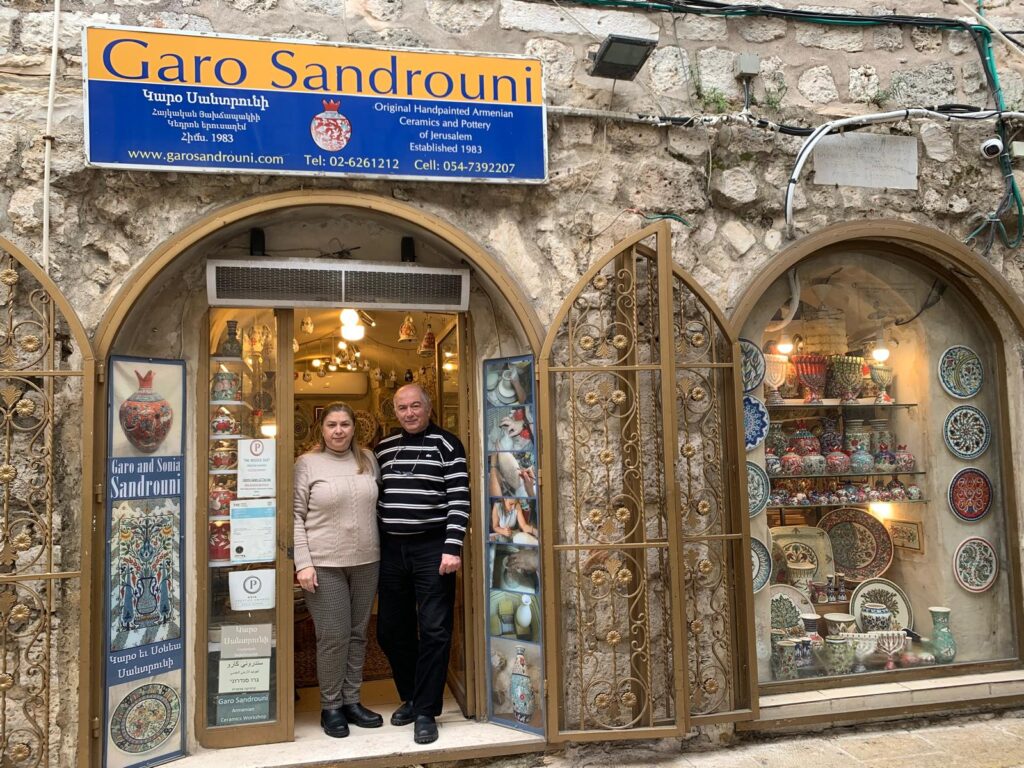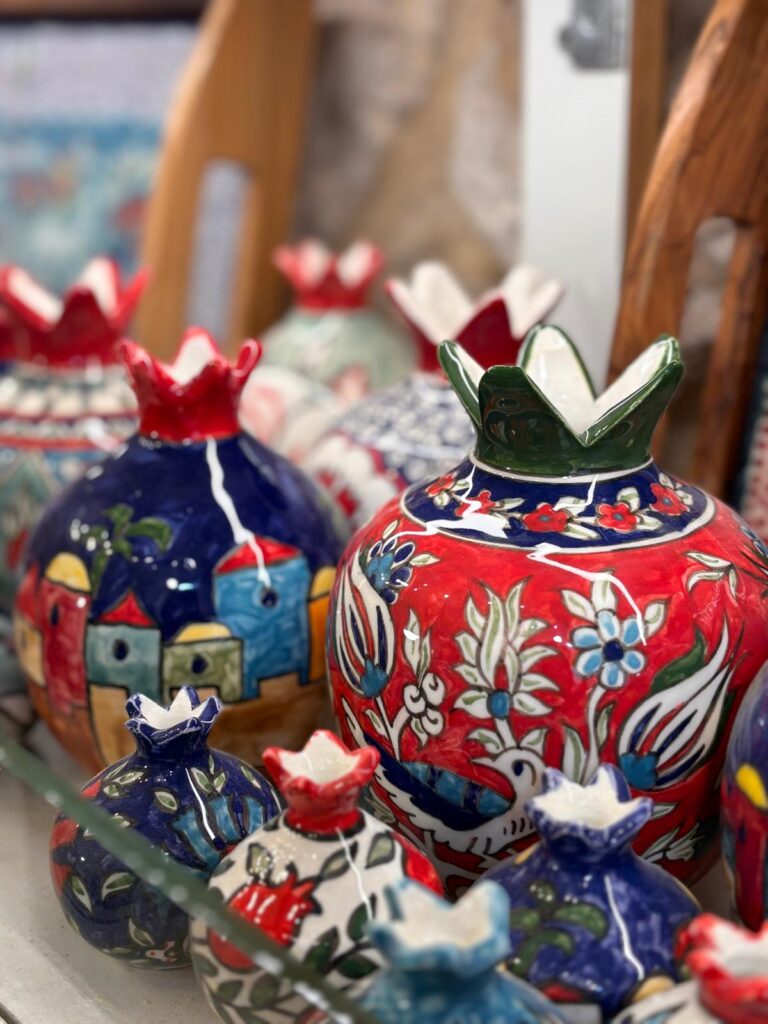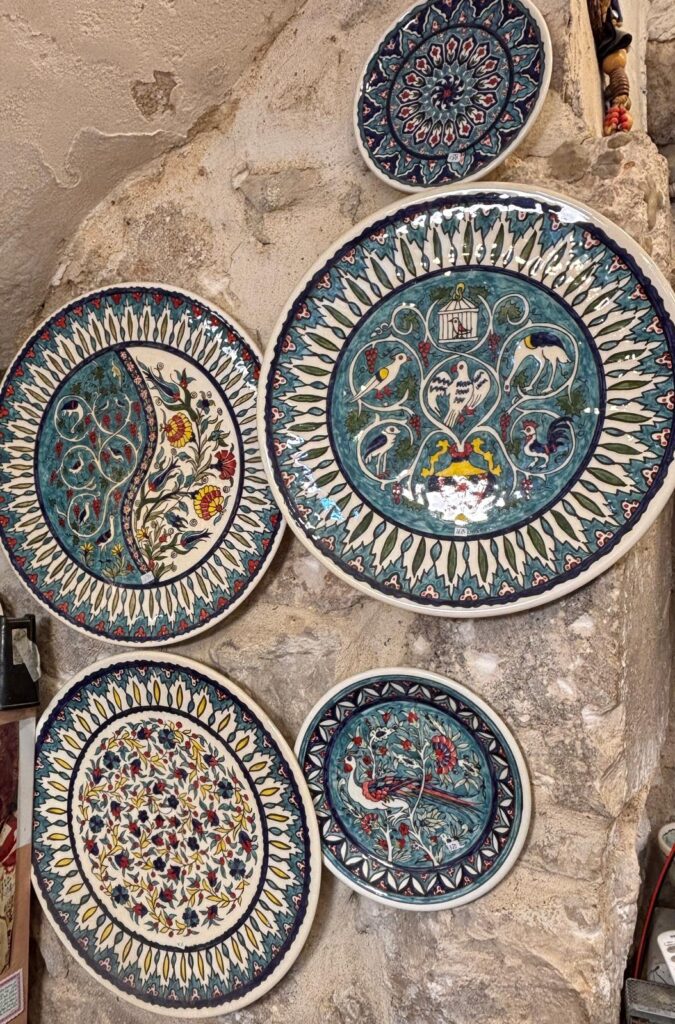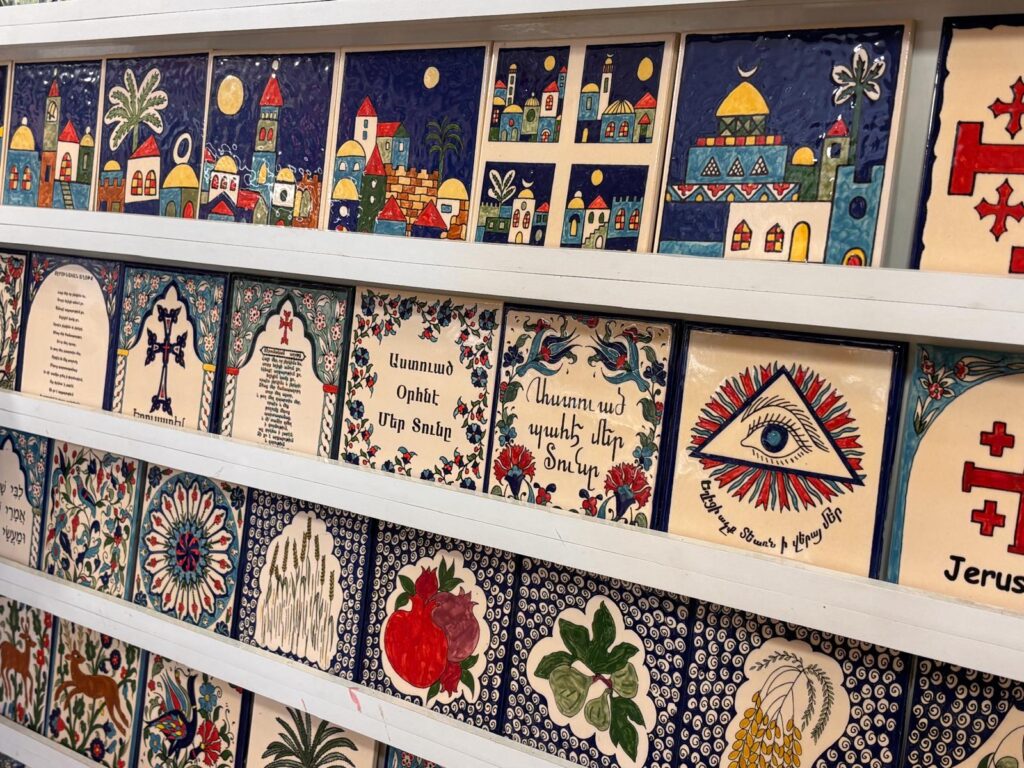About Us
Welcome to Garo and Sonia Sandrouni’s online gallery of authentic Armenian Pottery and ceramics of Jerusalem.
Our gallery and workshop are alocated in the heart of the Armenian Quarter in Jerusalem’s Old City, just a few steps away from St. James Cathedral and the Armenian Convent.
Every piece of tile and pottery is meticulously crafted and hand-painted in our workshop by my wife, Sonia, and myself. Our products are a creation with the highest standards of quality and authenticity – signed as a mark of their originality and our passion.
We invite you to explore our collection of products and experience the timeless beauty of Jerusalem’s Armenian ceramics.
The history of Armenian ceramics in Jerusalem dates back to the 16th century when Sultan Suleiman the Magnificent commissioned the restoration of the Dome of the Rock. To adorn its exterior with exquisite handmade tiles, he brought skilled Armenian potters from Kütahya—a city renowned for its thriving pottery industry and deep-rooted Armenian ceramic traditions.
Several phases of restoration of the Dome of the Rock were initiated by different Ottoman sultans, during which Armenian potters were employed. This tradition continued until 1918 when David Ohanessian, a master potter from Kütahya, was invited by Sir Ronald Storrs, the military governor of Jerusalem and founder of the Pro-Jerusalem Society. Storrs, deeply invested in the restoration of the Dome’s iconic tiles, spearheaded a project to produce ceramic replacements for the deteriorated and fallen ones. The British Mandate appointed Ernest T. Richmond, a British architect and director of the Department of Antiquities, to oversee the project in collaboration with the Supreme Muslim Council.
David Ohanessian brought with him a team of skilled apprentices, each specializing in different aspects of pottery making. By the end of 1919, he had established the first Armenian pottery workshop in Jerusalem. However, despite their expertise, Ohanessian and his craftsmen faced significant logistical and technical challenges in replicating the tiles of the Dome of the Rock, ultimately causing the project to fall through. Nevertheless, he successfully laid the foundation for an Armenian pottery industry that would become an integral part of Jerusalem’s artistic and cultural landscape.
In 1983, after years of working across various artistic fields, I established my first workshop—later known as the Garo Sandrouni Workshop—with the support of my wife, Sonia, an artist by training. Together, we developed new designs and innovative production methods, always staying true to our guiding principle: every piece in our repertoire is meticulously hand-shaped or thrown on the wheel, ensuring authenticity and craftsmanship in every creation.
Armenian ceramics of Jerusalem has gained worldwide recognition for pioneering the colored glaze technique in the region. At our workshop, we have developed a distinctive style of our own, blending designs inspired by manuscript illuminations and arabesque motifs. We started by incorporating natural elements such as cypress trees, grapes, lilies, roses, carnations, palms, lotuses, and pomegranates, later expanded our repertoire to include animal motifs like birds, fish, and peacocks—evoking the essence of a garden of paradise. This unique fusion of tradition and novelty has given rise to a signature aesthetic now known as Garo and Sonia Sandrouni Ceramics.
Ceramic is composed of a mixture of clay, quartz, and lime, which is shaped either by hand on the wheel or using molds. Once formed, the pieces are fired at approximately 900°C.
The designs are meticulously prepared on paper, where tiny pinpricks perforate the sheet along the lines of the pattern. This design is then transferred onto the pottery by dusting powdered charcoal through the perforations, imprinting the outline onto the surface. The outlines are carefully traced in black, then filled with traditional colors such as sapphire blue, turquoise, green, and the striking new crimson red.
Next, the pieces are glazed by dipping them into a liquid glaze. This transparent glaze is essential, as it forms a glass-like coating that preserves the vibrancy of the colors and enhances the durability of the products. The final firing takes place at approximately 1050°C, fusing the glaze and colors into a lasting finish. From shaping to painting and firing, the entire process can take up to 15 days, depending on the weather and the size of the piece.
Today, every piece of pottery and ceramic in our workshop is exclusively hand-painted by my wife, Sonia, and myself, with the assistance of young Armenian ladies who help in the coloring process.
Our goal is to create ceramic tiles and pottery of the highest possible standards. We use only lead-free glaze, ensuring that all our pieces meet international safety and quality specifications.
At the Garo & Sonia Sandrouni Workshop, you will find fine examples of Armenian pottery and ceramics of Jerusalem—a tradition passed down through generations, cherished and admired today just as it was centuries ago.




